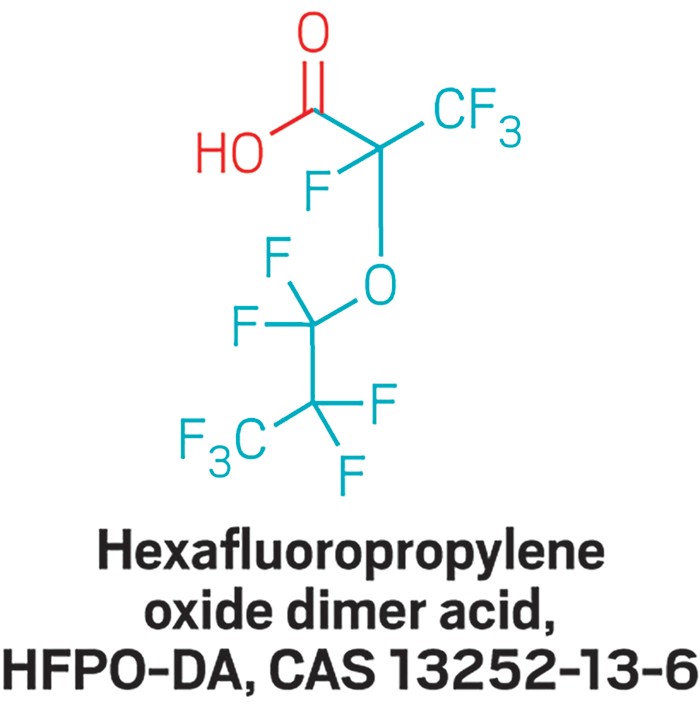Advertisement
Grab your lab coat. Let's get started
Welcome!
Welcome!
Create an account below to get 6 C&EN articles per month, receive newsletters and more - all free.
It seems this is your first time logging in online. Please enter the following information to continue.
As an ACS member you automatically get access to this site. All we need is few more details to create your reading experience.
Not you? Sign in with a different account.
Not you? Sign in with a different account.
ERROR 1
ERROR 1
ERROR 2
ERROR 2
ERROR 2
ERROR 2
ERROR 2
Password and Confirm password must match.
If you have an ACS member number, please enter it here so we can link this account to your membership. (optional)
ERROR 2
ACS values your privacy. By submitting your information, you are gaining access to C&EN and subscribing to our weekly newsletter. We use the information you provide to make your reading experience better, and we will never sell your data to third party members.
Pollution
GenX-related fluoroether taints water in wells near West Virginia Chemours plant
Granulated activated carbon filters remove HFPO-DA, U.S. EPA says
by Cheryl Hogue
April 24, 2018



A fluoroether from a Chemours plant near Petersburg, W.Va., contaminates public and private well water in Ohio and West Virginia, U.S. EPA announced on April 23.
This marks the first time that the industrial chemical hexafluoropropylene oxide dimer acid (HFPO-DA) has been found in U.S. water outside of North Carolina. In that state, the substance contaminates the Cape Fear River downstream of a Chemours plant near Fayetteville that makes fluoroethers. HFPO-DA has also been found in that river’s sediments, well water up to 11 km from the plant, and rainwater.
Tests of well water in West Virginia and Ohio found HFPO-DA at levels ranging from 16 to 81 parts per trillion in untreated drinking water from nine of 14 wells that Chemours sampled earlier this year at EPA’s behest.
Drinking water drawn from these wells is run through granulated activated carbon filters to strip out another industrial compound, perfluorooctanoic acid (PFOA). The filters, installed between August 2011 and February of this year, apparently also remove HFPO-DA, the water tests suggest. After filtering, the amount of HFPO-DA dropped to less than 10 ppt, EPA says.
For decades, the West Virginia facility, which DuPont owned before it spun off Chemours in 2015, discharged PFOA into the Ohio River and placed PFOA-containing waste in dumps. The facility also emitted the perfluorocarbon to air, where it blew over the river and deposited on Ohio land. From there, it was carried to aquifers by water percolating through the soil. DuPont installed the granulated activated carbon drinking water filters on the wells early this century. In 2017, DuPont and Chemours together agreed to pay $670 million to settle 3,550 lawsuits in West Virginia and Ohio from residents who say their health was harmed by drinking PFOA-tainted water. The International Agency for Research on Cancer says PFOA is possibly carcinogenic to humans.
DuPont also formerly owned the North Carolina plant, now the property of Chemours. That facility produces GenX, the ammonium salt of HFPO-DA. GenX is an industrial surfactant used as a polymerization aid to manufacture fluoropolymers such as polytetrafluoroethylene, which is made at Chemours’s West Virginia facility. DuPont introduced GenX about eight years ago as a “sustainable replacement” for PFOA. The health risks from drinking HFPO-DA are unclear, but some studies suggest it could be more toxic than PFOA.
Chemours did not respond to C&EN’s requests for comment on this or other articles this year about fluoroether pollution.
EPA says it is working closely with regulators in West Virginia and Ohio on the well-water contamination.





Join the conversation
Contact the reporter
Submit a Letter to the Editor for publication
Engage with us on Twitter